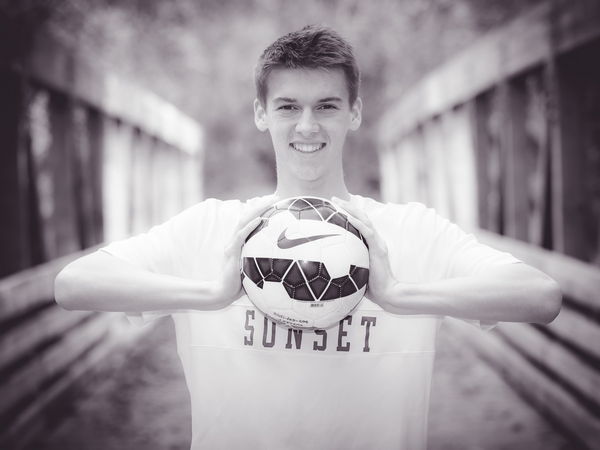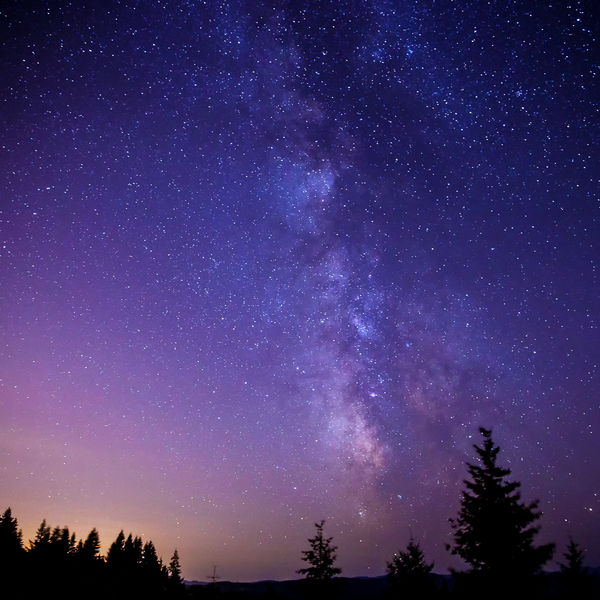Posts for: mdorn
Oct 14, 2015 19:29:59 #
wayne-03 wrote:
Well at 1/200 shutter speed you don't need high sp... (show quote)
Thanks for the comments. I guess I'm not sure when to use HSS and when not to. I'll give your suggestion a try. Set camera and lens for ambient light, then add TTL fill flash without a diffuser. Thanks. -M
Oct 14, 2015 15:40:43 #
I don't claim to be a portrait photographer, but I'd like to learn. It's actually pretty challenging for me to be outdoors with a flash. This shot was taken in Manual with the following settings:
Canon 6D, 70-200mm f/4L IS
Manual: 1/200s, f/5.0, ISO 400, with high speed sync in TTL +3 (with diffuser) for fill flash.
Some of the photos in this set met my expectations based on my experience level, but others did not. Some were under exposed, some were over exposed, and some had too much flash. I was constantly checking my histogram and making adjustments---which was time consuming.
Just curious to hear what other more experienced portrait photographers do with changing lighting conditions and subject positions? Should I be shooting in Manual mode, or should I let my camera make more decisions for me to get more consistent results?
btw: permission was granted to post this photo.
Canon 6D, 70-200mm f/4L IS
Manual: 1/200s, f/5.0, ISO 400, with high speed sync in TTL +3 (with diffuser) for fill flash.
Some of the photos in this set met my expectations based on my experience level, but others did not. Some were under exposed, some were over exposed, and some had too much flash. I was constantly checking my histogram and making adjustments---which was time consuming.
Just curious to hear what other more experienced portrait photographers do with changing lighting conditions and subject positions? Should I be shooting in Manual mode, or should I let my camera make more decisions for me to get more consistent results?
btw: permission was granted to post this photo.
Aug 19, 2015 23:48:38 #
LoneRangeFinder wrote:
So you mention "light pollution"? How close were you to city lights?
I would say maybe 15 miles as the crow flies? Total guess.
Aug 19, 2015 00:10:08 #
Mark7829 wrote:
I am not going to argue but I remember can't ever seeing a $ 30 CP. Yes a decent is likely $150 to 350.
I just hold my sunglasses up to my lens and shoot away. My glasses provide a dual function. Why spend any extra money on a filter---they are all the same, right? :-) <joke>
Aug 18, 2015 18:01:43 #
BBurns wrote:
Mo
All of my lenses are either 77 or 82mm. The easiest way is to just try it out. I think if I remove the UV I can get away with it.
When you consider it is only at the extreme end of one lens you use, it makes for a good argument to accept it for the rest.
All of my lenses are either 77 or 82mm. The easiest way is to just try it out. I think if I remove the UV I can get away with it.
When you consider it is only at the extreme end of one lens you use, it makes for a good argument to accept it for the rest.
I don't use UV filters, so perhaps you are right? I'll try it out. If it doesn't work on my 17-40L, then I can always use it on my 24-105L (both are 77mm). It definitely won't break my bank. Thanks for your feedback. I'll let you know how it works.
Aug 18, 2015 16:40:02 #
BBurns wrote:
Your question whet my appetite to go look at their... (show quote)
Thanks for this info... very helpful. So it's a no-go for me with the 17-40L. I can live with a little vignetting, but it sounds like just a smudge over a little.
Like you, I really like this technology though... I might consider it for my 24-70L; however, many of my landscape shots are with the wider lens.
Aug 18, 2015 12:39:02 #
SharpShooter wrote:
In photography, there is a start at the top, spend money only once mentality. Working your way up seems frowned upon. Hammer, just my own opinion. Good luck with your CPL!! ;-)
SS
SS
I've always believed on working my way up. Yes, there is added expense if you want to rationalize the expense, but experience is worth something too. You can't appreciate anything better if you don't know what is worse. Also, getting less than the best will force you to learn how to get the best out of your gear. If you have the best, you tend to accept your results good or bad. Easy excuse not to strive for more/better.
I'm no longer a young guy on a shoe string budget, but I still don't buy the very best equipment. I tend to buy middle of the road stuff. However, with filters, I try to buy better than the glass I'm putting them on. So for example, I'm not going put a cheap filter on a $2,000 lens. What's the point? Your image is only as good as the glass it's behind, not withstanding the photographer behind the camera. :-)
The problem with polarizers is that they are often misused. Just my 2 cents. Good luck with your decision.
Aug 18, 2015 12:17:11 #
GTinSoCal wrote:
Your equipment is more than adequate for your endeavor. :-)
Both the 24-70 and 50 will give you great results, just different.
The wider angle of the 24mm lens will give you a more expansive view, but the 50mm will allow you to use a shorter shutter speed to capture the same amount of light. SO you can prevent star trailing.
The high ISO performance of your camera easily makes short work of faint objects!
GT
Both the 24-70 and 50 will give you great results, just different.
The wider angle of the 24mm lens will give you a more expansive view, but the 50mm will allow you to use a shorter shutter speed to capture the same amount of light. SO you can prevent star trailing.
The high ISO performance of your camera easily makes short work of faint objects!
GT
Thank you. I followed a tutorial online, and the images turned out okay. Here is one taken two nights ago...
24mm, f/2.8, 20s, ISO 3200
Taken at 11pm. Still some light pollution in the lower left of the image. Nik's Define did an okay job with the noise. Didn't have a very interesting foreground, but I took what I could get for a last minute outing.
Any other tips with post processing would be helpful. Thanks.
Aug 17, 2015 21:10:02 #
Considering purchasing the Xume filter holder and adapter for my 17-40L (77mm) lens and Canon 6D. I understand there is some vignetting, but I was wondering how much. Does anyone have an example with this combination of hardware? Please don't post examples with other lenses and/or cameras unless you can convince me it's the same. Thanks in advance. -Mark
Aug 16, 2015 17:39:48 #
I'm planning to shot the stars tonight. I don't have the best equipment for this type of photography, but will a Canon 6D and a 24-70L f/2.8 make this even possible? Am I better off with my nifty fifty (50mm f/1.8) since it's a bit faster? Your experience is welcome.
Aug 16, 2015 17:26:50 #
Apaflo wrote:
The one single thing that might improve you image is to sharpen it, by inspection, after it is resampled. Generally Unsharp Mask has more effect on large images that are downsized, but Sharpen might also be useful.
Good tip... this did help a little but not much. I'll keep it in mind for future projects.
Aug 16, 2015 17:23:44 #
BigDaddy wrote:
Really, she should be asking for the correct size ... (show quote)
Yeah, I agree. However, like photographers... everybody is a web designer these days too. My client is putting this website together herself. I don't know what service she is using, but I'm pretty sure she's using a template. It may be giving her the minimum size for an image, but as long as the aspect ratio remains set, she should be able to use a higher res image. Of course, we go back to the original post... if it doesn't look good zoomed-in, then don't zoom in. Leave it at 100%. Furthermore, I think the pano kind of changed things a bit for her; it doesn't fit into the cookie cutter template she's using.
Thanks for all the feedback and sanity checks. My workflow may not be the very best it can be, but it's pretty good for standard web work.
Aug 16, 2015 14:27:07 #
Apaflo wrote:
It would also be useful to make it actually twice as big on each dimension. I highly suspect that is why other images supposedly look better. The client is setting the display dimension, but he isn't actually checking on what the image file has. It initially comes up on screen at what he sets it to, but a user can zoom in a tremendous amount before going past a 100% display. At maybe 200% it starts degrading.
Exactly. Thanks!
Aug 16, 2015 14:26:01 #
DaveHam wrote:
Perhaps re-sizing in jpeg is causing the problem? I would work in RAW and output from the reduced file to jpeg.
If you don't see any change in quality then perhaps the reduction is at its best and that is as far as you can go.
If you don't see any change in quality then perhaps the reduction is at its best and that is as far as you can go.
Resizing in JPEG is not the problem. I think I'm slowly coming to the conclusion that my client, as Cliff indicated, just needs to view it at 100%, where it looks perfect. If she wants a higher res image with the same aspect ratio, she needs to ask.
I didn't realize selling a web image was going to be this complicated and time consuming... I think I'm losing money at this point. :-)
Thanks for your help.
Aug 16, 2015 13:59:09 #
blackest wrote:
Try a crop at 10400 by 3440 then scale to 1300 by 430 hopefully that should look better at the smaller size.
A smaller sized image before the reduction does look better---in fact, a single image (non pano) will look better when reduced, but what do you do when the client wants the pano? I should have just used a wider lens and captured the same field of view with one image. :-)

